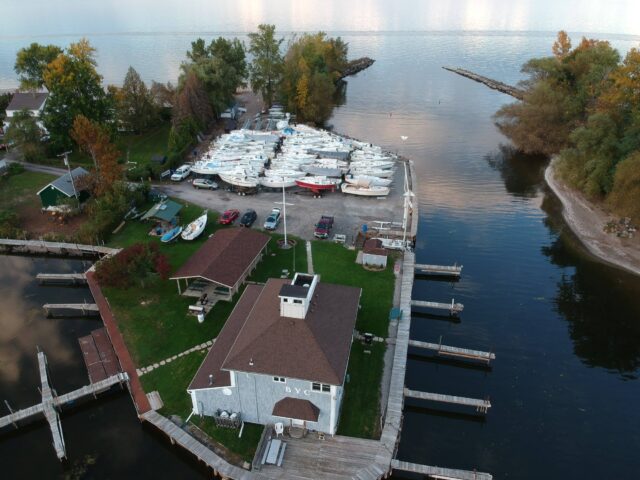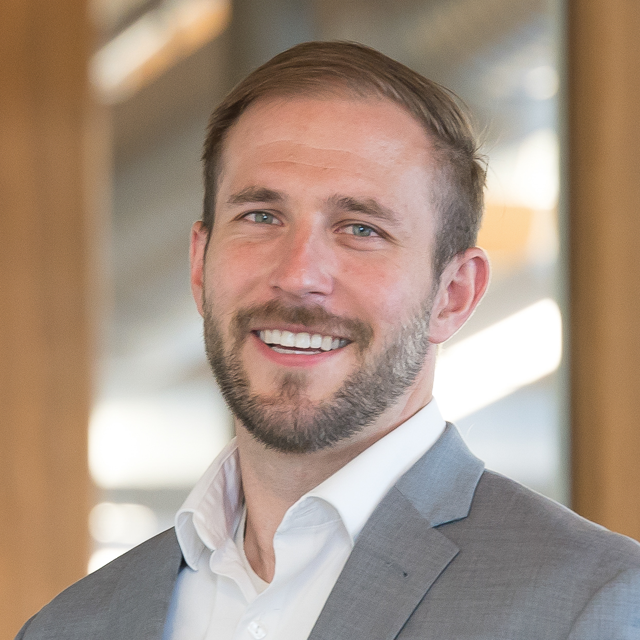What is Climate Resilience?

For millennia, human beings have impacted the natural world around them.
Over the past 150 years, advancements in technology have sped up the rate at which we have disturbed natural systems. During that same stretch, we have begun to record reliable data about the planet on which we live and have used it to improve our lives. In the last three decades, we have noticed drastic changes to our natural world such as rising average temperatures, sea level rise, changes in precipitation patterns, and an increase in size and intensity of extreme weather events. At the same time, human-built development has never been as expansive as it is today.
As we march into the 21st century, there is a need for a more thoughtful and holistic design of our communities. “Green” measures such as energy-efficient buildings, the reduction of organic waste deposition into landfills, vehicle fleet electrification, and the use of natural systems to combat the effects of a changing climate are critical. These are examples of sustainability because they can be maintained and continued over an extended period of time. Additionally, we need to plan for a changing climate to build communities that can withstand more extreme weather events. This is called climate resilience.
Where is the Action?
Recognizing this need for climate resilience, we are already seeing federal investments totaling $47 billion specifically earmarked in the bipartisan Infrastructure Investment and Jobs Act for preventing and mitigating damages from floods, wildfires, and other environmental risks that will be exacerbated under climate change. The same investments and mobilization can be seen in multiple states on the eastern seaboard, which have put in place a variety of laws, goals, programs, and funding to assess climate risks and identify mitigation measures. For some, they have developed a comprehensive, multi-pronged approach to resilience planning and adaptation implementation, with an eye toward environmental justice.
Front and Center in New York
Notable among these states is New York, which released the Climate Action Council’s highly ambitious Draft Scoping Plan in December 2021. Once the public comment period ends on June 10, the Plan will be finalized by the end of 2022. The Plan will then serve as a statewide net-zero emission blueprint to mitigate climate change impacts that New Yorkers may experience in the future. The proposed plan includes the following:
- Clean electric grid of renewable energy generation facilities and energy storage.
- Energy-efficient homes and businesses, including electrification of buildings.
- Smart growth, reliable public transit, and vehicle fleet electrification.
- Promotion of carbon sequestration in natural systems such as forests.
- Target reduction of methane emissions across landfills and farms.
- Tailored low-carbon and carbon capture solutions for certain industrial facilities and practices, including a transition to low global warming potential refrigerants.
- Equitable access for disadvantaged communities to decarbonization benefits.
Climate resilience and adaptation measures also share the stage in the proposed Plan alongside the emission metrics and clean energy economy narrative. The Plan acknowledges New Yorkers are already experiencing the climate change impacts, with examples etched in memory such as the 2012 Hurricane Sandy aftermath and the recent flooding along the Lake Ontario shoreline. The urgency to strengthen our communities and protect infrastructure assets in the face of changing environmental patterns is evident. The recommendations revolve around community resilience planning and nature-based solutions. Several examples are outlined below:
- Protect and restore forests, wetlands, and farmland via private stewardship incentives and new State regulations.
- Reduce coastal and inland flooding risks with accelerated floodplain assessments, dam removals, at-risk infrastructure relocation, and State building code update accounting for sea-level rise and riverine flooding.
- Establish a bond (“Clean Air, Clean Water, and Green Jobs Bond Act” in 2022) to fund green buildings/infrastructure, ecological restoration, harmful algal bloom abatement, open space preservation, etc.
- Improve the reliability of the energy system, from utility substations to electric vehicle (EV) charging infrastructure, for grid outages and extreme weather events.
- Empower communities with technical guidance and consolidated funding for transit-oriented development, local climate actions, zoning updates, and climate risk considerations in permits and environmental reviews.
Who Benefits?
The simple answer is theoretically everyone long-term. The most compelling benefits range from reliable energy to improved public health to new job opportunities. However, there must be safeguards to ensure that these benefits are enjoyed equitably – especially in disadvantaged communities that are more likely to experience disproportionately high pollution levels and flood and heatwave vulnerabilities due to discriminatory practices such as redlining or gentrification. One such safeguard approach is to require a minimum of such benefits to be allocated to the typically underserved. In New York, at least 35 percent of renewable energy and climate resilience investments must serve the disadvantaged communities.
Careful consideration of environmental justice paired with technical expertise and grant writing savviness is essential to any municipality or governmental agency undertaking a project to further its climate resilience – such as shoreline stabilization, invasive species control, climate action planning, or building code update. Private developers in the renewable energy and affordable housing industries are already heeding this call as they attempt to future-proof their portfolio of assets by avoiding floodplains or installing geothermal heat pumps. The time is now for an all-hands-on-deck approach, including LaBella’s climate resilience task force – a dedicated team of engineers, scientists, architects, community planners, and other technical specialists ready to tackle the challenges brought on by climate change.
For more specific information about individual east coast state climate change goals and action plans, check out the legislation updates discussed here.
For questions or a friendly chit-chat on all things related to climate resilience, please contact Jared Pristach at jpristach@labellapc.com.

About the Author
Jared Pristach, PEEnvironmental Engineer
Jared is an Environmental Project Manager and Environmental Engineer responsible for coordination and successful completion of climate resilience projects and solar array development. He currently manages the Brownfield Cleanup Program, shoreline resilience, and solar design projects. Project experience includes Phase I and Phase II ESAs, NYSDEC State Superfund projects (including remedial design and construction oversight), remedial systems operation and maintenance, green infrastructure design, civil engineering site design, shoreline and streambank resilience planning, and structural engineering design of recreational facilities.